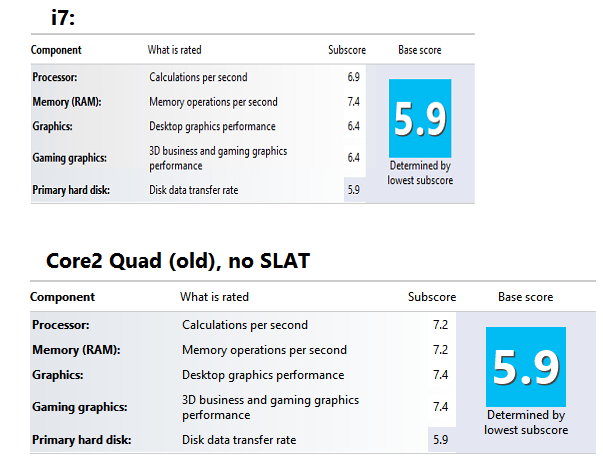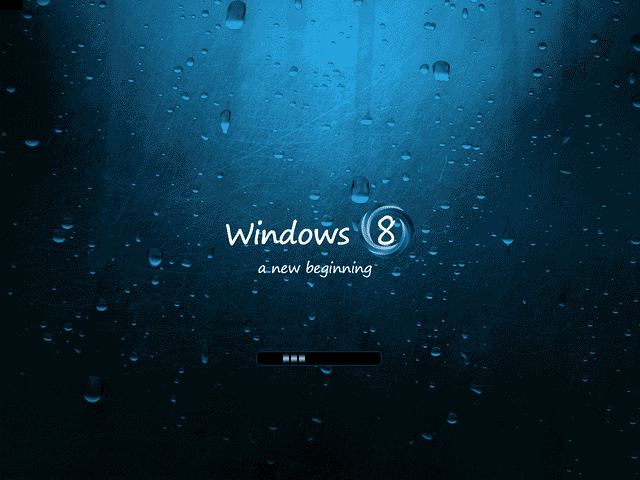Google may have inadvertently worked itself into some awkward dependencies that could be troublesome for it in the next few years.
It’s hard to imagine Web 2.0, now a decade gone by, as the peak of the web, but I think the numbers speak volumes about it. Below, I’ve grabbed some stats from Wikipedia, as of today (4/26/2015) ( http://en.wikipedia.org/wiki/Usage_share_of_operating_systems ), that puts together some puzzle pieces together in my head, but introduces a few new ones.
Originally, I was thinking about Windows market share this past weekend, and how absurd it is that folks think of Windows 8/8.1 a “failure”… (It came up at the Global Azure Cloud Camp Jim O’Neil hosted at BlueMetal’s office in Watertown this past Saturday.) There’s more Windows 8+ machine (alone) than all versions of Mac OS X combined… Microsoft’s “failure” is only a failure when compared to Windows XP and Windows 7.
| Desktop operating system browsing statistics | ||||
|---|---|---|---|---|
| Windows 7 | 58.04% | |||
| Windows XP | 16.94% | |||
| Windows 8.1 | 10.55% | |||
| Mac OS X 10.10 | 3.96% | |||
| Windows 8 | 3.52% | |||
| Windows Vista | 1.97% | |||
| Mac OS X (other) | 1.71% | |||
| Mac OS X 10.9 | 1.61% | |||
| Linux | 1.5% | |||
| Windows (other) | 0.2% | |||
Windows 8 / 8.1 comes sums at roughly 13%, while OS X (all versions) is (estimating generously) 8%. So 13% may be a failure compared to Windows 7’s 58%…. but no one thinks of OS X’s 8% market share as anything less than a smash hit.
I get that the terms of failure for 8.x come from it’s largest customer, the enterprise market, which has largely ignored it. It’s why Windows 10 is a significant comeuppance for Microsoft.
All told, though, among desktop OS’s, Windows is king. No surprise there, really. That’s only the beginning of the story.
Some of the other stats started to catch my attention with respect to all devices, and what folks are using them for.
From the same Wikipedia page:
“
According to Gartner, the following is the worldwide device shipments (referring to wholesale) by operating system, which includes smartphones, tablets, laptops and PCs together.
| Source | Year | Android | iOS/OS X | Windows | Others |
|---|---|---|---|---|---|
| Gartner[1] | 2014 | 48.61% | 11.04% | 14.0% | 26.34% |
| Gartner[2] | 2013 | 38.51% | 10.12% | 13.98% | 37.41% |
| Gartner[3] | 2012 | 22.8% | 9.6% | 15.62% | 51.98% |
“
The above table establishes that “device” shipments of Windows devices is relatively small compared to Android devices, with Apple devices coming in 3rd overall. If we set form factor aside and look at all consumer “computing devices”, Android is undeniably tops, and has been for a few years already.
Now look at this… (a breakdown of what OS folks are using web browsers on.)
| Web clients’ OS family statistics | ||||
|---|---|---|---|---|
| Windows | 55.74% | |||
| Linux based | 22.02% | |||
| iOS, OS X | 17.17% | |||
| Symbian, S40 | 2.02% | |||
| Other | 3.05% | |||
| Linux based is actually composed of both desktop and Android based devices… digging a bit, the stat that shows Android usage specifically shows it at less than half of “Linux” based stats.
See the rub? The web is unequivocally consumed by desktops, which are owned by Windows. Android… the most popular consumer “device” (by an allegedly monopolistic margin in some markets), represents less than half the web traffic. Either the margin of error is so far off these stats, rendering them all useless, or there’s an interesting story there. This means the good old browser is being left behind by mobile devices. This has been observed before, but it’s interesting to note that Google’s hanging on it. I mean, what’s your home page? If you’re like a lot of folks, it may well be www.google.com. Here’s a question. Is the browser propping up Windows, or is Windows propping up the WWW? Here’s an answer… Microsoft’s go-forward strategy is Mobile First / Cloud First. Windows 10 is a mobile OS that supports desktops, not a desktop OS that supports mobile. Clearly, Microsoft is taking risks, but their goal is to push Windows into the mobile app world, taking only the parts of the world wide web that are important to mobile and cloud. One might argue that Windows 10 includes both IE 12 and the Spartan browser. Further, Microsoft is just releasing a new ASP.NET and MVC web development tools. No matter what, the web app is not going to vanish overnight. Still, Microsoft adding yet another browser and more tools is 1) further fragmenting the already terribly fragmented web app platform, 2) a bone thrown to the many enterprises who have built their infrastructure on web technology and can’t afford to fully shift their enterprise app platform (and developer skill set) to mobile apps in the next few years, and 3) continued support for the still critical http protocol that is a core network transport for everything in the Internet of Things. One might argue Office 365. The backfire there: pretty much everyone who has Office 365 also has desktop and even mobile apps. This leaves Office 365 to be primarily a services back end for those apps, with a web-based UI as a fallback if you for some reason can’t run the native apps. Apple’s iOS success and Google’s Chromebook failure led Google to cannibalize itself into the (unexpectedly?) wildly successful Android. Android’s success, in turn, is eating away at Google’s classic model… Google will likely always be a media platform first, but more and more, that media platform is being confined to (and defined by) Android. (Like a genie enslaved to its bottle… “Phenomenal cosmic power, itty-bitty living space.) All in all, I’ll go out on a limb and say that Microsoft is about done propping up the consumer web as an application platform. Still, forgetting what Microsoft is doing, Google is SaaS heavy, and has no PaaS or IaaS offering to fall back on. They have no desktop OS to elevate them. All the cards in their foreseeable future appear to rest on Android (and therefore Samsung). With the anti-trust suits already starting against Google because of Android, it’s hard to really see Google’s future over the next decade. Being at the top, it’s pretty easy to say Android is peaking. The question is where does that leave Google. YouTube? Self-driving cars? I find myself thinking it makes a bit more sense that Apple and Yahoo have aligned their search with Bing. What am I missing? |
||||



